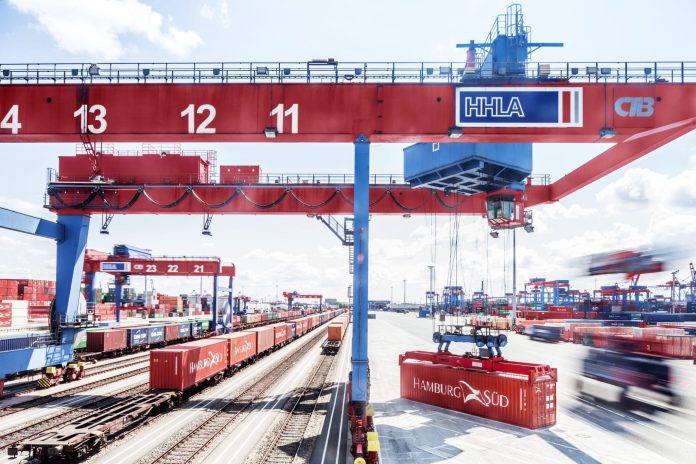Note, this is the second part in a feature about Nokia’snew industrial strategy. The first instalment can be found here.
Nokia’s latest results, which saw shares slip on a slow forecast for 2019 5G sales, present the company’s strategic re-organisation around three so-called ‘pillars’ – business units and sales items, by any other name.
The first pillar covers the latest generational upgrade of mobile networks (more video, anyone?); the last covers software and services (a ‘no-brainer’, in network engineering parlance). The second is more interesting.
It hinges on the company’s Future X strategy, announced late last year, which describes its pursuit of direct sales with industrial customers.
Nokia’s results statement runs through the Finnish vendor’s recent contract wins, all of them covered in these pages: a private LTE deployment with China Unicom for a BMW plant in China; the same for Brazilian power distributor Elektro; and again, for the Port of HaminaKotka in Finland, organised with local LTE provider Ukkoverkot.
Other pilots and trials were also mentioned, including with ABB and Kalmar to show 5G could support time-critical applications in electricity grids, and with the Hamburg Port Authority and Deutsche Telekom to prove the efficacy of data glasses, connected traffic lights, and sensors on ships.
Alongside a number of starter initiatives in smart cities space, these contract wins and experiments describe Nokia’s new industrial playground, where it will drive growth beyond its core business.
As the IT and OT barriers come down, mashed up in IoT, Nokia reckons it can add more value in industrial markets by going direct, or mob-handed with partners like HPE and AWS. “We think we can fit really nicely in there,” says Stephan Litjens, general manager of digital automation at Nokia.
“If we only made solutions for our classic customers, we wouldn’t add much value.” For Litjens, private LTE, as served up by Nokia and its new service-provider partners, puts right the inadequacies of commercial LTE networks.
 Because enterprise networking, as it stands – as a kind of 3.0 version of this 4.0 revolution the market is grasping at – is not really designed for coal-face crisis comms, he suggests, speaking at a recent HPE event in Geneva. “It’s not really what you need for industry.”
Because enterprise networking, as it stands – as a kind of 3.0 version of this 4.0 revolution the market is grasping at – is not really designed for coal-face crisis comms, he suggests, speaking at a recent HPE event in Geneva. “It’s not really what you need for industry.”
Nokia’s old rival Ericsson suggests cellular IoT networks, in their present incarnation, only serve simple IoT use cases, around massive-scale sensing and sense-making; the real magic starts with the advent of ultra-reliable low-latency communications (URLLC) sometime after 2020, it says.
The Swedish outfit has even carved out a new segment for industrial grade cellular IoT, called Industrial Automation IoT, which makes bespoke the standard URLLC component of the 5G NR system.
Nokia is more bullish. Private LTE networks deliver, says Litjens. Telecoms solutions already match up to industrial demands on a number of counts, he suggests. “So OT wants mission critical? Well, we do carrier grade, which is 5x9s – yes, it needs to become six, but we’re well on the way.”
The difference is significant: 99.999 per cent reliability brings about five minutes downtime per year; 99.9999 per cent brings closer 30 seconds. Serious money is lost between the decimals. “We think we can get closer,” says Litjens.
The argument goes that 5G will bring this hyper-reliability to wireless networks, as the new Ericsson logic says.
Litjens says the introduction of private LTE and the emergence of network slicing, of the radio network in LTE and the end-to-end network with 5G, allows for robust quality-of-service agreements with enterprises, and helps knock out fears about running critical processes on wireless networks.
“Specialised versus general purpose? We are kind of in the middle,” he says. “We use general purpose, but augment it with specialised technologies, when needed; radio, especially, is a good example to make it work better.”
He talks about the need for edge computing, as a distinctive driver in the industrial space, and shows a graph with an axis for latency and an axis for bandwidth, and AI applications mapped between (see above).
Latency and bandwidth defines the edge – how far the compute power and inference goes from the factory floor. LTE, privately managed, gets you to a latency of about 40-50ms, he suggests; 5G will go further, to 1ms.
Video canes bandwidth, of course, and demands closer compute functions; mixed reality applications, typically, hinge on lightning data handoffs. Combine the two, and nothing but the edge will do. “It’s impossible to make AR happen with these regional data centres,” says Litjens.
In Geneva, at the HPE opening, he suggests an experiment to put traditional data-centre latencies into perspective. “Look at me; your eyes will follow, automatically, as I move,” he says. “That reflex in your eyes is 7ms.”
Think of a data centre in the next city, over the horizon, he says: “Just for the light to go back and forth is 10ms, so it’s game over. You must have to have the edge cloud on site – and that’s not just for AR, but all kinds of industrial processes.”
As long as time-critical data inference is happening inside the factory, even if periodic training takes place in the cloud, then private mobile networks, starting with LTE and going to ultra-low latency 5G, will support“business critical parameters”, says Litjens.
Its radio propagation makes mobile technology well suited to out-of-reach field scenarios. He talks about “metal and reflection” as blockers for most networking. “The heartbeat signal in your factories still has to get through.”
Mobile works, he says. “This reliability and deterministic behaviour is extremely important. Ultra low latency 5G will move us to next step, two years from now, but we have a good starting place today to work with LTE.”

